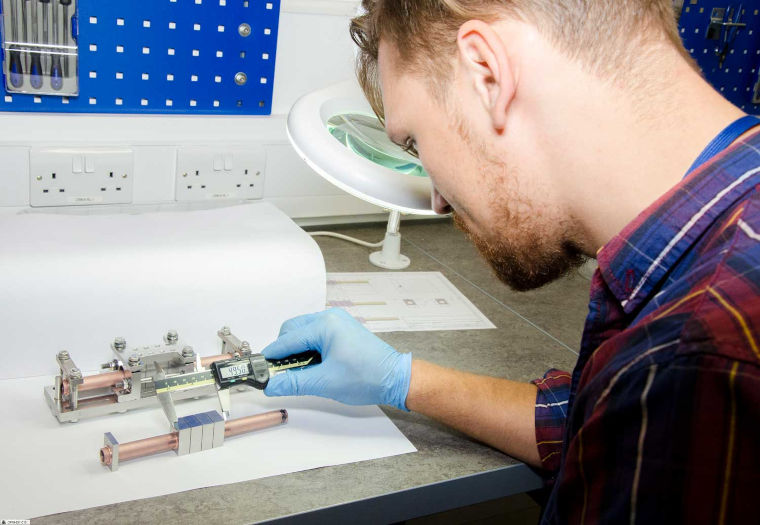Vacuum brazing
Vacuum brazing involves the joining of parent materials, below their melting point, by using a molten filler metal in a clean vacuum environment.
Vacuum brazing involves the joining of parent materials, below their melting point, by using a molten filler metal in a clean vacuum environment.

Benefits
Process benefits include:
- consistency – the furnace environment and process are automated, temperatures can be limited to avoid damage to sensitive microstructures in parent materials
- low distortion – the uniform heating of the whole assembly to relatively low temperatures causes lower stress than welding for example
- versatility – there is a vast catalogue of filler metals which can be used for different temperature ranges, parent materials (even non-metallics), and end-use environments
- low unit costs – batch production in a single furnace cycle reduces unit price of components
Brazement design
Successful brazement design depends upon:
- joint geometry, capillary gaps and surface finish
- choice of braze filler material (BFM)
- planning for furnace tooling
Please contact our experienced team at the earliest stage of design to get the best end results.
We develop novel brazed solutions for fusion challenges, but also supply components to medical, oil & gas, and cryogenics customers.
Vacuum brazed components made by us are used in MRI machines across world. As part of this and similar work, we develop robust processes for new products and bridge the gap from development to production to enable high-value supply chains.